Journal
Nose Job in Korea: Your Complete Guide to Korean Rhinoplasty
2023-10-16
Nose
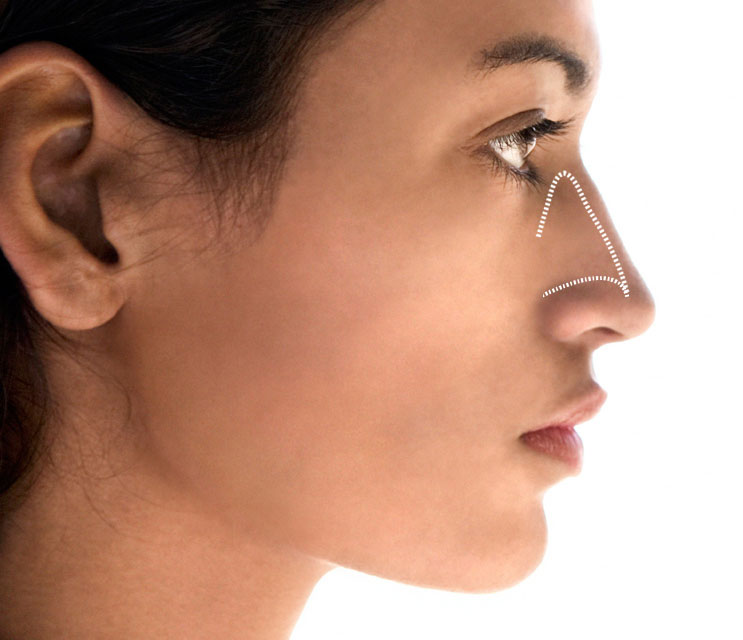
Nose Job in Korea: Your Complete Guide to Korean Rhinoplasty
A nose job, or Rhinoplasty, is a surgical procedure that reshapes and resizes the nose for aesthetic enhancement or functional improvement. It can improve facial harmony, correct breathing issues, and fix a deviated septum.
Rhinoplasty in Korea
Korea is deemed the “Plastic Surgery Capital” of the world, having reported that 20 percent of women have undergone some form of cosmetic surgery, according to the International Society of Aesthetic Plastic Surgeons. As the leader in the plastic surgery sector, Korea’s plastic surgery technology has become a global standard. At Docfinderkorea, we introduce the best Korean specialist surgeons, with the highest level of medical technology and innovative techniques, who can perform rhinoplasty to your ideal desires.
Types of Rhinoplasty
There are various types of rhinoplasty surgeries, and each procedure is determined based on individual needs and desires. Factors such as length, width, the tip of the nose, and the overall proportion of the face influence the surgery. In this article, we will delve into the different types of surgeries and discuss which nose job is right for you.
Tip Plasty (Bulbous Tip Correction)
Tip plasty or Bulbous Tip Correction surgery is recommended for those with a round or long nose that that may make the face appear flat or dull. Tip plasty, can make the nose more defined and create a higher tip, reducing the width of the nose and giving a more youthful face. When the bulbous nose is not severe, the tip can be heightened by gathering the alar cartilage, but in most cases, autologous cartilage is needed to give support and height to the nose.
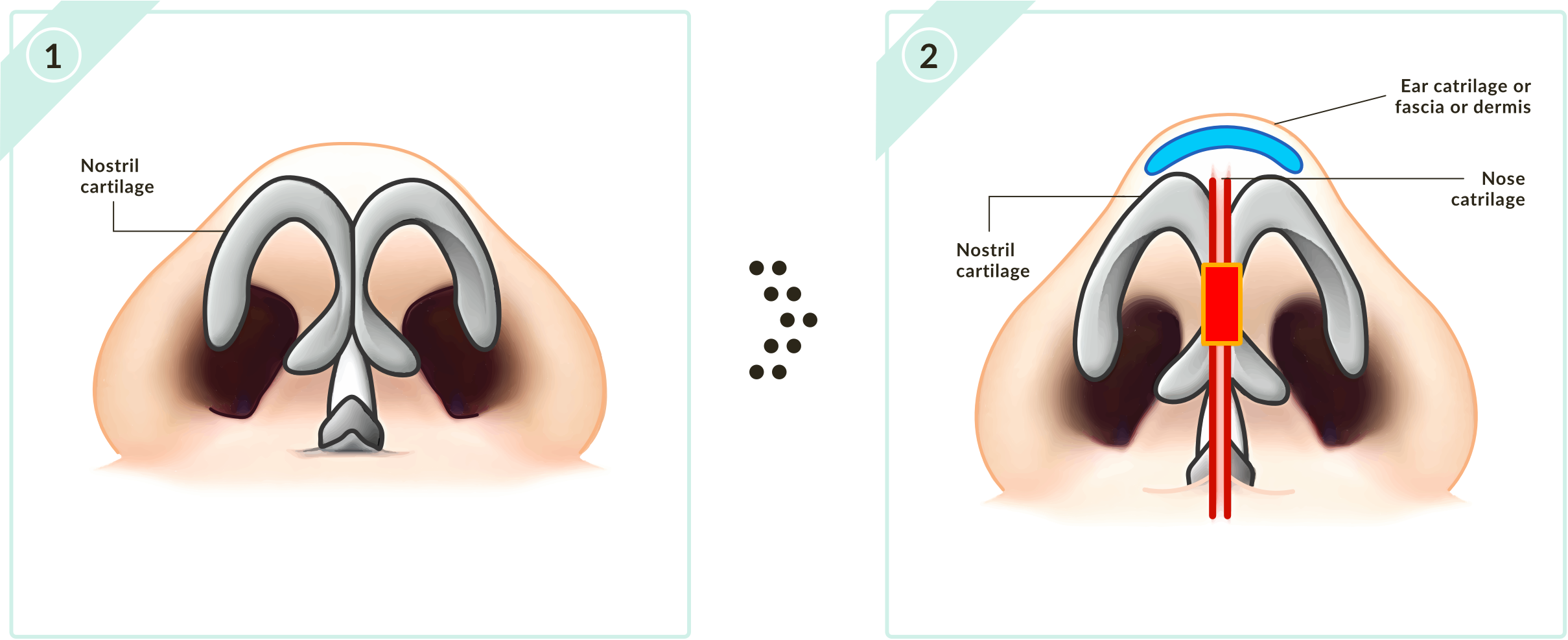
Surgery Time: Around 1 hour
Anesthesia Type: Local anesthesia with sleeping sedation
Hospitalization: Not required
Face wash & makeup application: 7 days after surgery
Post-surgery check-up: 1 time (depending on the patient’s condition)
Stitches removal: 7~10 days after surgery
Downward Pointing Tip Correction
When the nose tip is pointed downwards like an arrow, also known as a ptotic nose, it can cause a facial imbalance. In these cases, downward pointing tip correction is recommended. During the surgery, the nose tip is reduced by excising the tip cartilage and placing it near the septum to support the new nose angle.
Upturned Nose Correction
When the nose is pointed upwards, upturned nose correction is suggested. In most cases, the septum cartilage is cut from the upper part of the nose and repositioned downwards. However, in more difficult cases, or when patients do not have enough cartilage in their nose, the ear or rib cartilage will be used to prop up the nose.
Bridge Augmentation
Bridge augmentation is recommended for individuals who want to improve the height of the nose. Those with low bridges can have an impression of a wider nose and a less defined appearance of the face. There are two methods of augmentation.
The most common method is using silicone implants because it is very easy to place and remove if needed. The disadvantages of silicone implants are that there is a risk of infection, extrusion, and the possibility of the implant being visible.
The second option is using rib implants. While there is less chance of infection, rib cartilage is not appropriate for most cases because there is a chance of warping and absorption into the body. In the long run, a silicone implant is a better choice, as it can last a lifetime.

Surgery Time: Around 1.5 hours
Anesthesia Type: Local anesthesia with sleeping sedation
Hospitalization: Not required
Face wash & makeup application: 7 days after surgery
Post-surgery check-up: 1 time (depending on the patient’s condition)
Stitches removal: 7~10 days after surgery
Alar Reduction
Alar reduction, or nostril reduction surgery, is a popular surgery for those who want to decrease the size of their nostrils. The “ideal” width of nostrils is the distance between the eyes and is shorter than the width of the lips.
But it is important to note that everyone’s nostrils become wider when one smiles, so it will not prevent that. It will only minimize the overall width of the nose. Alar reduction surgery can be performed with two different methods.
Process of alar reduction for wide nostrils: A thin incision is made on the outer part of the nostrils and excess skin is removed and sutured back together.
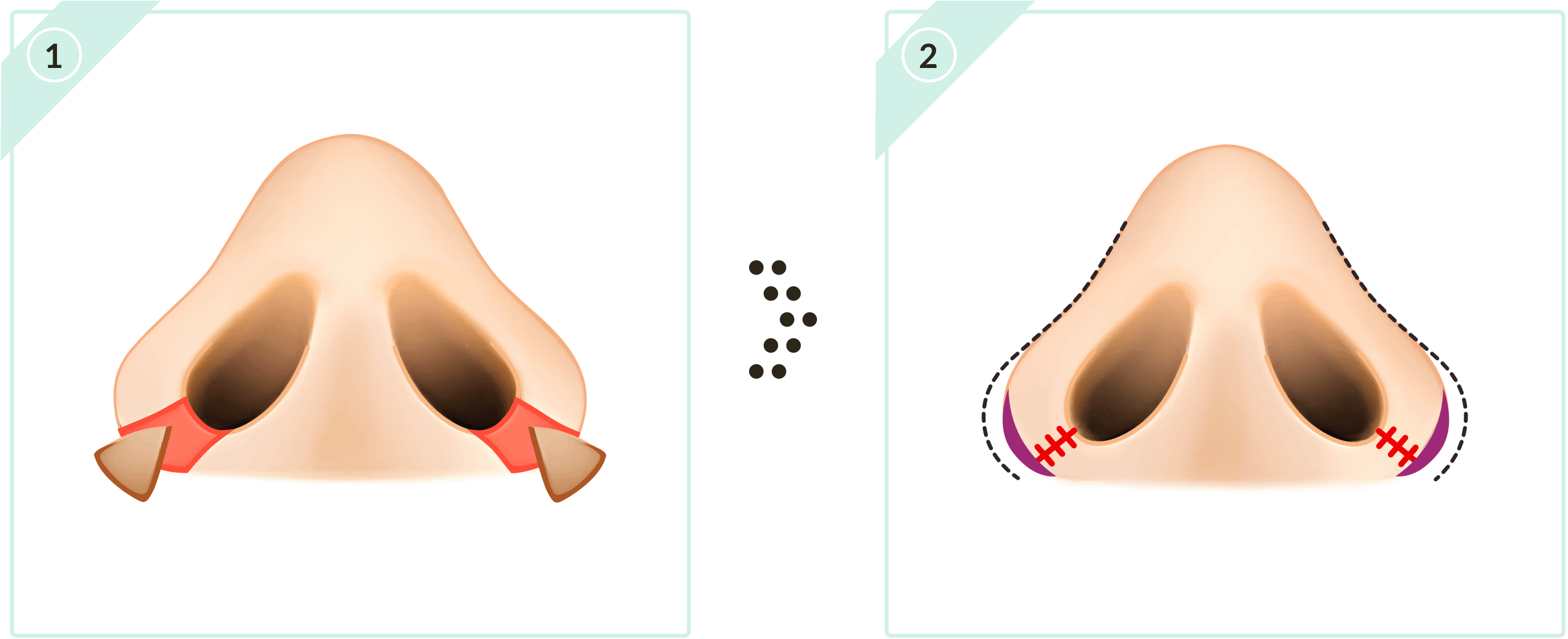
Process of alar reduction for wide columella: the columella and nostril are tightened with a thread.
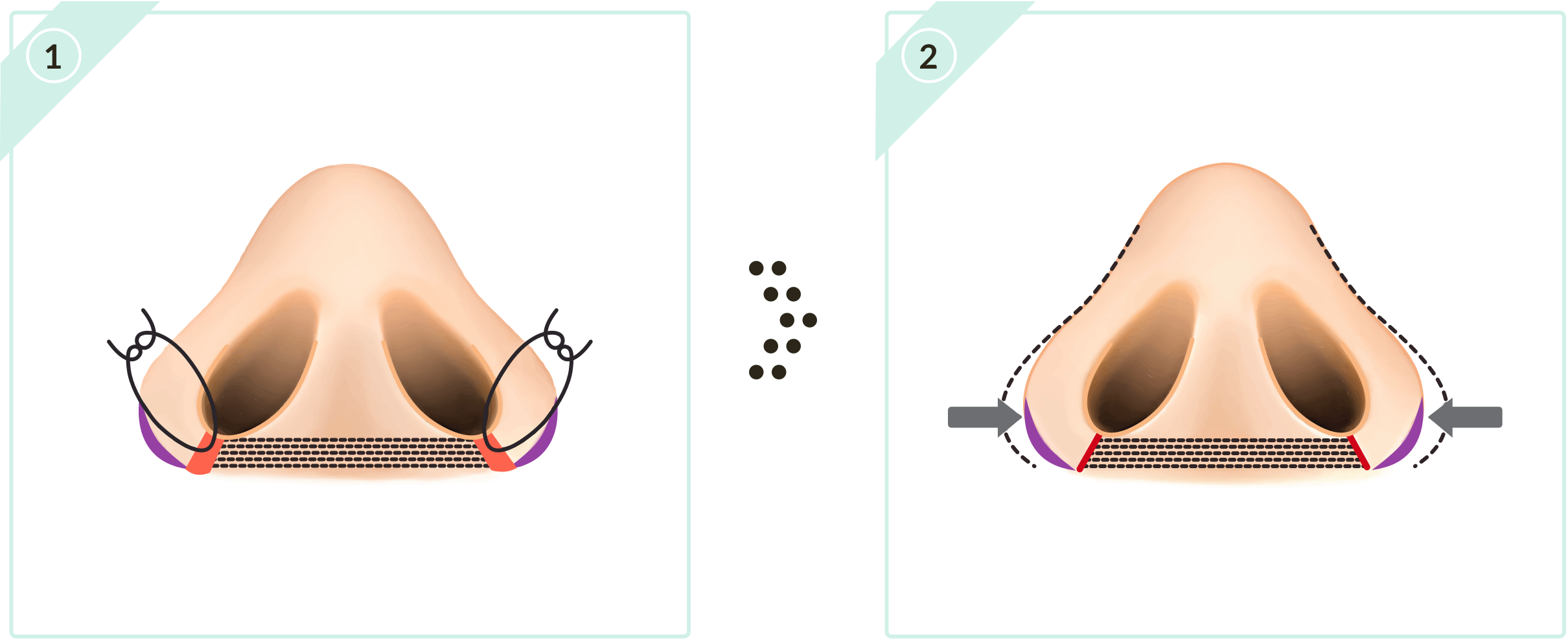
Surgery Time: Around 0.5 hours
Anesthesia Type: Local anesthesia with sleeping sedation
Hospitalization: Not required
Face wash & makeup application: 7 days after surgery
Post-surgery check-up: 1 time (depending on the patient’s condition)
Stitches removal: 5~7 days after surgery
Hump Reduction
Hump reduction is recommended for those who have a nose hump. Typically, a nose hump creates an older more masculine appearance. During hump reduction surgery, the nasal bone and cartilage are shaved or rasped to correct the hump. If the hump takes up more space on the nose bridge, it can cause the nose to look very flat after hump removal, so a bridge implant might be needed for height correction.

Surgery Time: Around 1.5 hours
Anesthesia Type: Local anesthesia with sleeping sedation
Hospitalization: Not required
Face wash & makeup application: 7 days after surgery
Post-surgery check-up: 1~2 times (depending on the patient’s condition)
Stitches removal: 7~10 days after surgery
Osteotomy
A wide nose can be reduced with Osteotomy. It is recommended for those who want a well-defined nose from not only the side profile but also from the front view. Osteotomy can also improve slanted and crooked nose which is why osteotomy is often performed together with rhinoplasty, hump reduction, or tip plasty.
When performing osteotomy, the surgeon first diagnoses the condition of wide/slanted/crooked nose bone structure. After, the bone fracture design is carefully planned
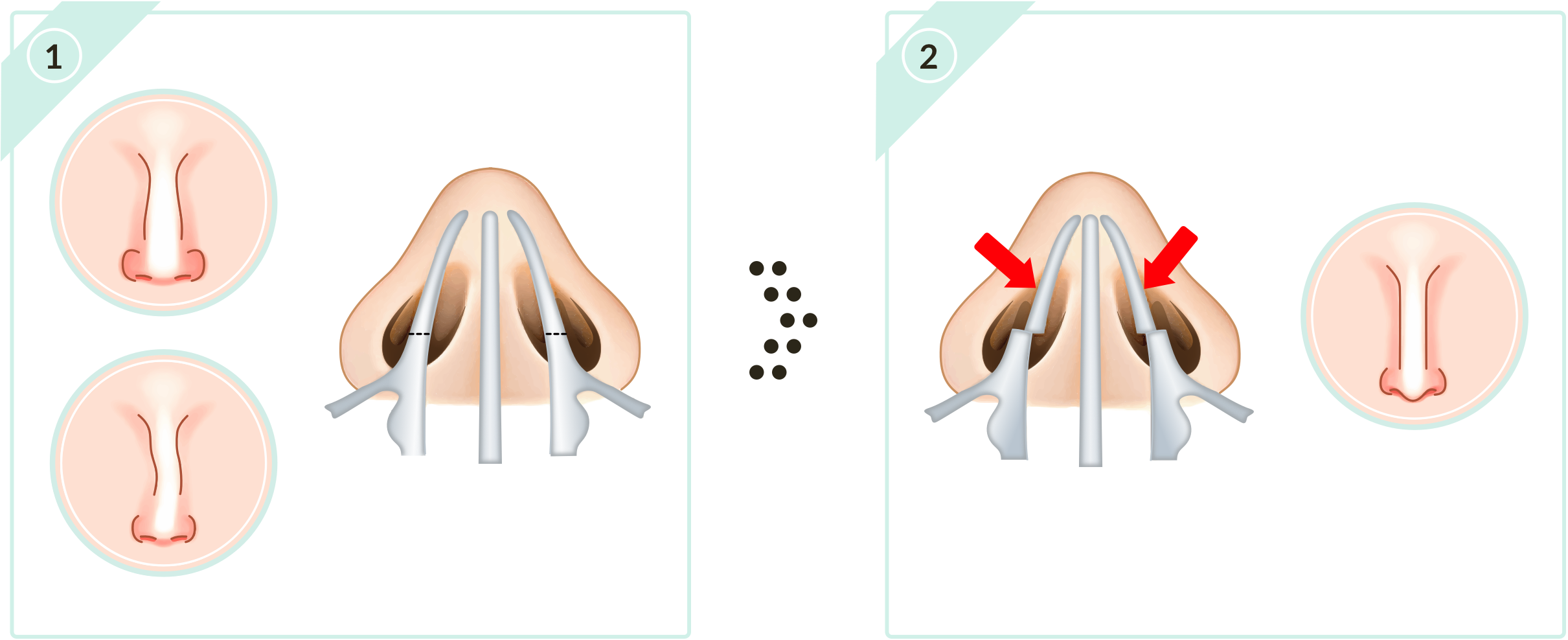
Surgery Time: Around 1.5 hours
Anesthesia Type: Local anesthesia with sleeping sedation
Hospitalization: Not required
Face wash & makeup application: 7 days after surgery
Post-surgery check-up: 1 time (depending on the patient’s condition)
Stitches removal: 7~10 days after surgery
Cartilage Graft Rhinoplasty
During augmentation rhinoplasty, cartilage is used to help to enhance the shape of the nose. Cartilage is a strong, flexible connective tissue that protects the bones and joints. While cartilage is solid, it is flexible, malleable, and much softer than bone.
It can be found in many parts of the body. Usually, the surgeon will harvest the cartilage from either the nasal septum(septal), ears, or ribs(costal), and then reshape it to place it in the necessary regions of the nose.
Septal Cartilage
The lower half of the nose, the nose tip, and the nasal septum are all made of cartilage. The nasal septum is the wall of cartilage that divides the nasal cavity into two halves. The benefit of using septum cartilage for grafting during rhinoplasty is that it is easily accessible.
Moreover, the tissue is from the nose itself (autologous grafting), so it is more likely to perfectly adapt when re-implanted and eliminates the risk of infection or rejection from the body. However, not everyone has enough cartilage in their septum. As we age, the cartilage naturally deteriorates and stiffens.
Ear Cartilage
Ear cartilage is a very common source of graft material for rhinoplasty because it is relatively strong and malleable. It is also softer than septal cartilage, which makes it easier to sculpt and reshape. The natural curvature of the ear cartilage makes it a perfect choice for nose tip surgery.
Ear cartilage is also easy to harvest and as most surgeons make an incision behind the ear, it will not leave any visible scars.
Rib Cartilage
The biggest advantage of rib cartilage is that there is a large amount of readily available cartilage to harvest. However, rib cartilage is more firm, more likely to warp and change shapes over time, and requires longer operative time. As a result, surgical procedure takes longer, and the cost of surgery increases as well.
For patients who prefer to not use their own rib cartilage, there are donated rib cartilages that are cheaper and equally reliable for rhinoplasty. However, while donor cartilage provides support and stability, there is a risk of rejection from the body. When foreign tissues or implants enter the body, it may reject it because it does not recognize it as its own. This carries the risk of infections and other problems that may influence the outcome of the surgery.
Having the perfect nose differs from person to person. Careful analysis and diagnosis are fundamental in designing your perfect nose. With Docfinderkorea, we will find you a rhinoplasty specialist, who can naturally shape the face and give a refined and sophisticated appearance.
Back


